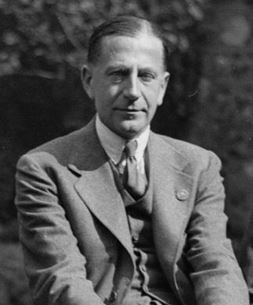Frank MacDermot facts for kids
Quick facts for kids
Frank MacDermot
|
|
|---|---|

MacDermot, September 1933
|
|
| Senator | |
| In office 1 July 1937 – 23 May 1943 |
|
| Constituency | Nominated by the Taoiseach |
| Teachta Dála | |
| In office February 1932 – July 1937 |
|
| Constituency | Roscommon |
| Personal details | |
| Born | 25 November 1886 Dublin, Ireland |
| Died | 24 June 1975 (aged 88) London, England |
| Political party | |
| Other political affiliations |
|
| Spouse |
Elaine Thayer
(m. 1931) |
| Children | 1 |
| Parent |
|
| Relatives | Niall MacDermot (nephew) |
| Education | Downside School |
| Alma mater | |
| Military service | |
| Allegiance | |
| Branch/service | British Army |
| Rank | Major |
| Unit | Royal Army Service Corps |
| Battles/wars | World War I |
Frank C. J. MacDermot (born November 25, 1886 – died June 24, 1975) was an important Irish figure. He was a lawyer, a soldier, a politician, and a historian. He served in the Irish Parliament as a Teachta Dála (TD) for Roscommon from 1932 to 1937. He was also a Senator from 1937 to 1943. MacDermot was one of the people who helped start the political party called Fine Gael.
Contents
Early Life and Career
Frank MacDermot was born in Dublin, Ireland. He was the youngest of seven sons. He went to Downside School and the University of Oxford. After his studies, he became a barrister, which is a type of lawyer.
During World War I, he joined the British Army in the Royal Army Service Corps. He reached the rank of Major. After the war, he moved to the United States. He worked as a banker in New York City from 1919 to 1927.
Political Journey
Starting in Politics
In the late 1920s, MacDermot returned to Ireland. He first tried to become a Member of Parliament in 1929 but was not successful. In 1932, he was elected to Dáil Éireann, the main house of the Irish Parliament. He represented the Roscommon area as an Independent TD.
Helping to Create Fine Gael
In 1933, Frank MacDermot helped create a new political party called the National Centre Party. He became its leader. This party soon joined with two other groups, Cumann na nGaedheal and the Blueshirts. Together, they formed a new, bigger party called Fine Gael. It is believed that MacDermot himself came up with the name "Fine Gael." He became a vice-president of this new party.
MacDermot often spoke out against the Fianna Fáil party and its leader, Éamon de Valera. He disagreed with many of their decisions. For example, he thought that getting rid of the oath of allegiance and changing the Constitution of Ireland would make the division of Ireland (between the Republic of Ireland and Northern Ireland) harder to fix. He believed that Ireland needed to have a better relationship with the government of Northern Ireland and the unionist community.
Leaving Fine Gael
The early days of Fine Gael were a bit complicated. The first leader, Eoin O'Duffy, caused some problems. He questioned the value of democracy, which MacDermot and others disagreed with. O'Duffy resigned in 1934.
MacDermot himself left Fine Gael in 1935. This happened when some members of Fine Gael criticized de Valera for speaking out against fascist Italy's invasion of Ethiopia at the League of Nations. MacDermot felt differently about this issue.
Later Political Role
In 1937, de Valera introduced a new constitution of Ireland. MacDermot was very involved in the discussions about it. He did not agree with everything in the new constitution. For example, he did not like the idea of giving the Roman Catholic Church a "special position."
He did not run for election in 1938. However, de Valera, surprisingly, appointed him to the Seanad, which is the upper house of the Irish Parliament. He served there until 1943.
During World War II, MacDermot disagreed with Ireland's decision to remain neutral. He believed that Ireland should have joined the Allied forces. After his time as a Senator, he became a correspondent (a type of reporter) for The Irish Times newspaper in the U.S. and Paris.
In 1939, MacDermot wrote a book called Theobald Wolfe Tone and His Times. This book was very well-received and is still considered an important study of Theobald Wolfe Tone, a famous Irish historical figure.
Personal Life
While working in America, Frank MacDermot met Elaine Orr Thayer. They later married and had one son, Brian MacDermot. Elaine passed away in 1974, and Frank MacDermot died in 1975 while visiting London.

